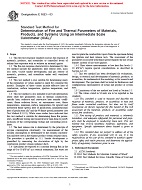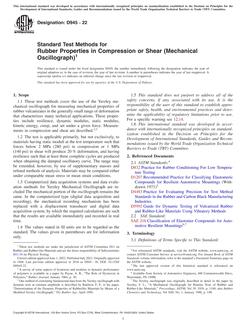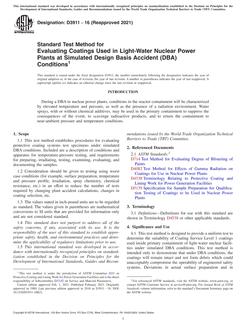1.1 These methods cover the measurement of atmos- pheric pressure with two types of barometers: the Fortin-type mercurial barometer and the aneroid barometer.
1.2 In the absence of abnormal perturbations, atmos- pheric pressure measured by these methods at a point is valid everywhere within a horizontal distance of 100 m and a vertical distance of 0.5 m of the point.
1.3 Atmospheric pressure decreases with increasing height and varies with horizontal distance by 1 Pa/100 m or less except in the event of catastrophic phenomena (for example, tornadoes). Therefore, extension of a known barometric pressure to another site beyond the spatial limits stated in 1.2 can be accomplished by correction for height difference if the following criteria are met:
1.3.1 The new site is within 2000 m laterally and 500 m vertically.
1.3.2 The change of pressure during the previous 10 min has been less than 20 Pa. The pressure, P 2 at Site 2 is a function of the known pressure P 1 at Site 1, the algebraic difference in height above sea level, h 1 – h 2 , and the average absolute temperature in the space between. The functional relationship between P 1 and P 2 is shown in 10.2. The difference between P 1 and P 2 for each 1 m of difference between h 1 and h 2 is given in Table 1 and 10.4 for selected values of P 1 and average temperature.
1.4 Atmospheric pressure varies with time. These methods provide instantaneous values only.
1.5 The values stated in SI units are to be regarded as the standard.
1.6 This standard does not purport to address all of the safety concerns, if any, associated with its use. It is the responsibility of the user of this standard to establish appropriate safety and health practices and determine the applicability of regulatory limitations prior to use. Specific safety precautionary statements are given in Section 7.
Product Details
- Published:
- 09/10/1999
- Number of Pages:
- 5
- File Size:
- 1 file , 48 KB


